
We were lucky enough to have Kelsey Garitty Riley as our September Artist Interview! She was also our book club artist for “The Glass Castle”, and we absolutely love what she came up with! If you haven’t seen it, make sure to check out the printable here. That being said, Kelsey grew up in Germany and Belgium before moving to the US to pursue her art career. She studied at the Savannah College of Art and Design and now resides in New York. We’ve taken a peek inside her studio and asked her a few questions to better understand her process and thoughts as an illustrator. We hope you enjoy this behind the scenes look into her creative wonderland!
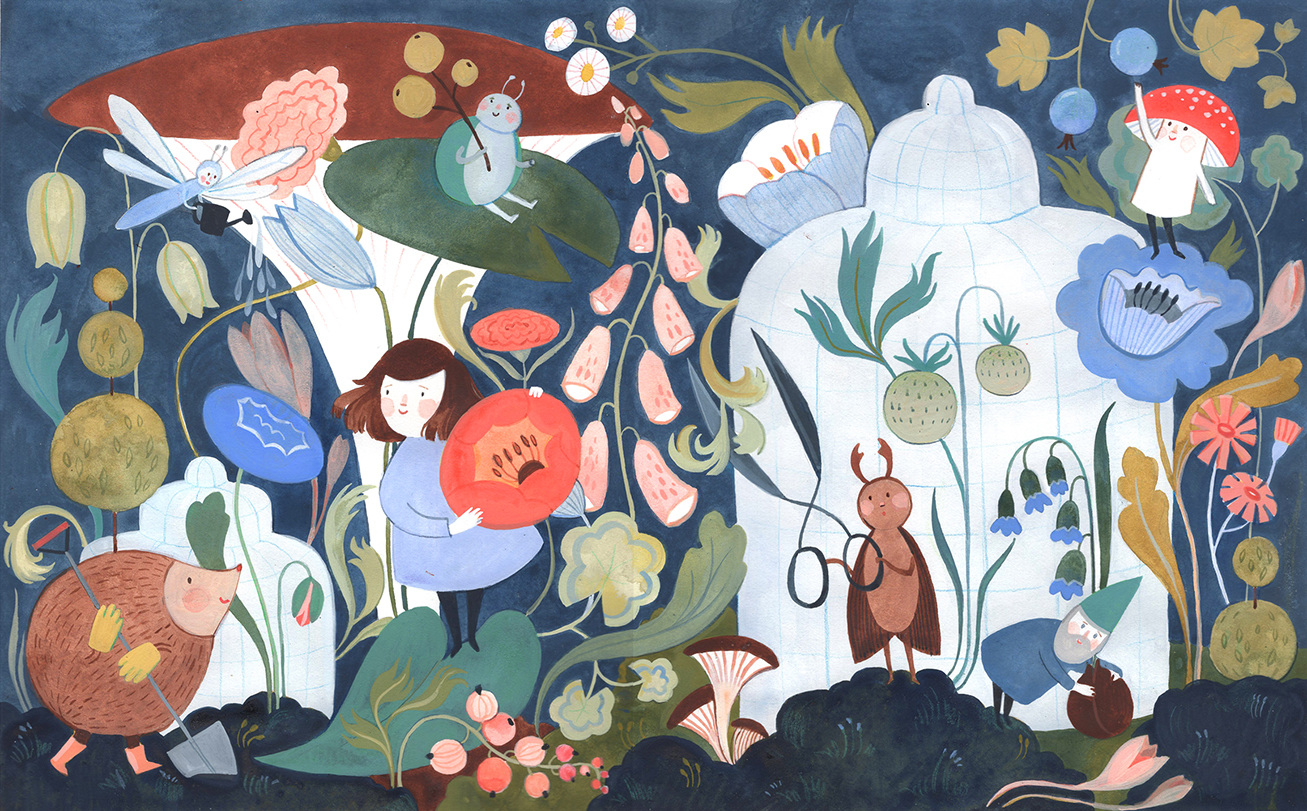 Read the full interview here!
Read the full interview here!

Artist Interview with Kelsey Garrity Riley
1. How did your illustrative style develop? How has it developed and changed over the course of your career?
My work grows and changes in waves. I definitely had looser, more expressionless characters when I was starting out, often with no backgrounds. I had much softer colors and used more line work and collage. Often I still use these things, but lately, I’ve been pushing my work to be a bit brighter and bolder (still somewhat limited and dark colors, but fuller and with more contrast). Everyone (editors, publishers, clients) have encouraged me in this way for a long time now (and they were so right!) but I think I needed to slowly get there on my own. I’m also working on making my characters more expressive. I tend towards stillness but when you’re communicating through characters, their faces and body language really need to say it all!

2. What do you doodle when you aren’t making anything for a specific project or client?
I return to the same things out of habit- most often little characters. More specifically- some variation of a little girl with a bob in bell dresses and tights holding oversized botanicals.
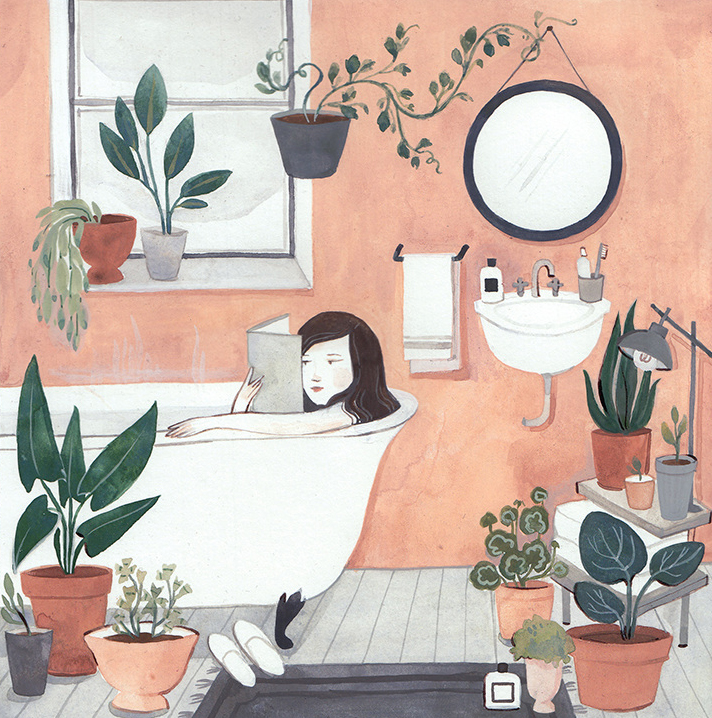
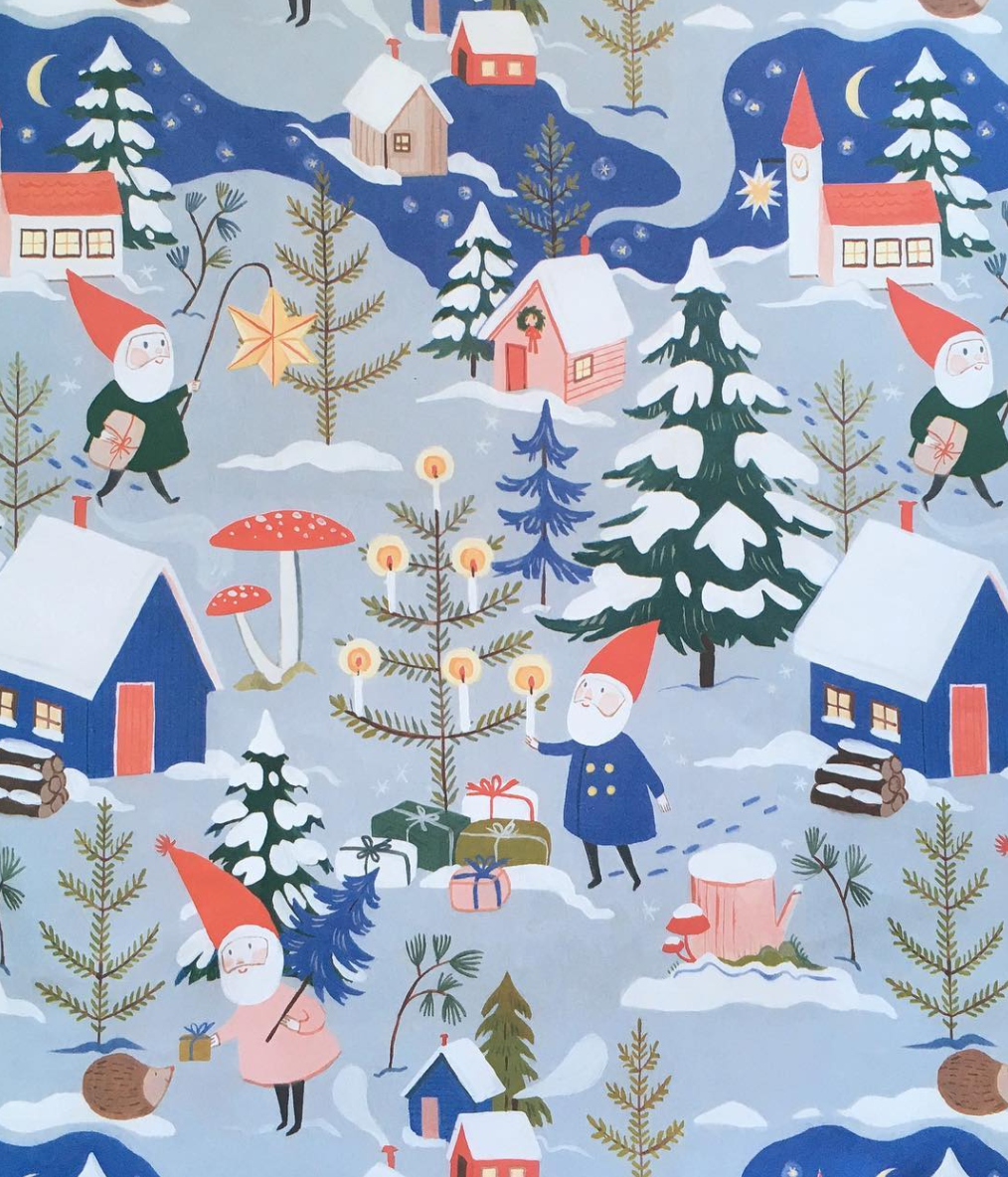
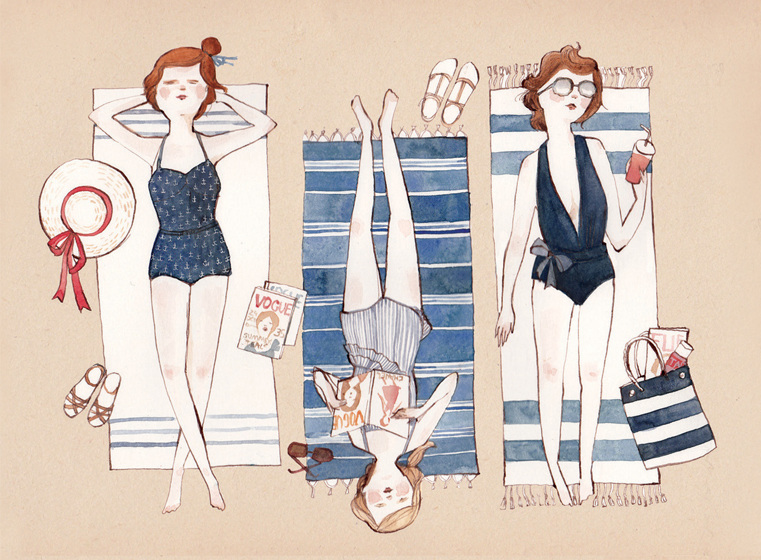
3. How do you stay original, and what tips on the subject do you have for other creatives?
It’s a tough topic especially in this Internet age because we’re so inundated with visuals and it’s so easy to get wrapped up in the updates we tune into every single day from artists we admire. I understand how people come too close trying to emulate and really end up copying other creatives. I think the most important thing is to find your own visual language. When you aren’t looking at what other work is out there, when you think about your own interests and hobbies that inspire you personally, where do you go with your work? Pull from your own emotions and memories, and in that way, the work can’t help but be deeply your own unique vision. I would say look to yourself for inspiration, or around you, but don’t look exclusively at other peoples art.

4. Along those lines, how do you react when you sense that other people are copying your work?
There can be two reactions. On the one hand it’s flattering and if an artist ( especially someone very young ) reacts to a look or feeling I’ve created and is inspired to make their own work. That’s wonderful! Every artist has gone through that phase. But it’s a whole different thing to see someone copy an artists style or work and try and market it professionally. Find your own creative voice! Be proud of creating your own visual world and way of expressing yourself, don’t try and be someone else. That kind of plagiarism is so crushing to the person who’s worked hard to develop that unique visual language, one that comes from years of trial and error and your own personal experience.
Somewhat related- I think respect for other people work goes beyond copying styles. I absolutely love when people post or share my work if they credit or tag me in it! To use it without referencing the artists is incredibly discouraging. I’ve also come across occasions where people have used my art with their own type or for some other use. To see someone edit your work in a way you haven’t approved is very frustrating ( and also illegal?)

5. Where and how do you get inspiration?
Travel, nature, life experiences, memories. Most often I return to feelings and imagery from my childhood and where I grew up ( Brussels Belgium and the Black Forest in Germany). I’m incredibly motivated by a creative family who inspire me (My husband who’s a wonderful illustrator and designer: erikriley.co, my brother who’s an amazing woodworker and who I’ve collaborated with on some things: collingarrity.com and his Etsy shop here) and the incredible work of dear illustrator friends.

 6. If you weren’t an illustrator, say, in an alternate universe, what would be your creative outlet?
6. If you weren’t an illustrator, say, in an alternate universe, what would be your creative outlet?
I love this question! Something with plants or interiors- two things I absolutely love and find so much inspiration in for my work. If I had to choose something non-creative I would have loved to study psychology.
7. What does your studio or workspace mean to you?
I work from home and there can certainly be challenges. I love our space! But I have to be proactive about having a healthy routine (which I’m still working on figuring out). I’m very grateful to have a little studio room but unfortunately, it’s in the middle of our Brooklyn railroad style apartment, so it doesn’t have any windows. If I’m just sketching I’ll work in there, but I definitely need the natural light when I paint so I usually set up shop at our kitchen table (a beautiful big walnut folding table my brother made!) and its great. I’m still working on containing my messes because if given the chance I’ll take over every flat surface of our home with work!
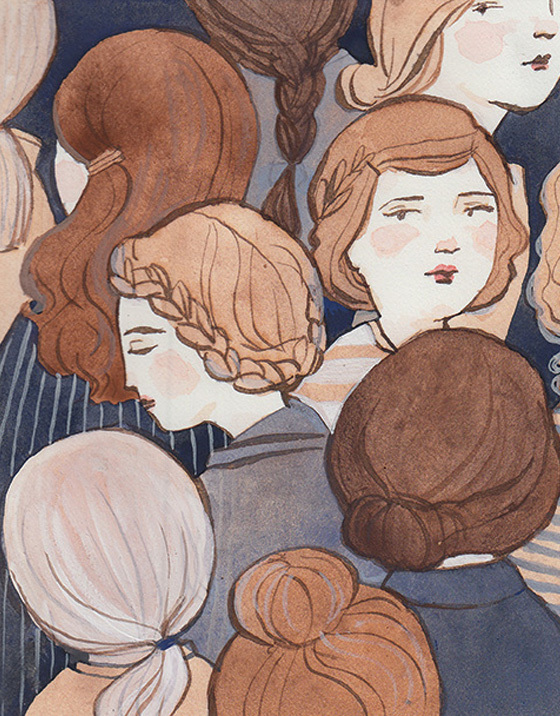
8. Do you feel that attending art or design school is crucial for an artist to “make it” in 2017?
I think it can be a great tool, but I don’t think it’s absolutely necessary. I’m so grateful it was a part of my experience and it certainly helped me grow. We’re in an age where you can promote and share your own work online, and I think so long as your work and professionalism speak for themselves no one cares where or if you went to school. Something I think that is so important about the experience of school- is learning to look at others, and your own work, critically. And having the experience of receiving feedback and accepting constructive criticism from others. If you don’t go to school specifically for design I would encourage aspiring illustrators to seek out that kind of experience. I do want to reiterate though how much I loved my experience at SCAD. I loved exploring different directions to take my art, under the encouragement of all different kinds of professors who really helped me to where I am now with my work.

And here’s the lovely artwork that Kelsey made for our book club book, The Glass Castle, this month. You can download it (for free!) here. 
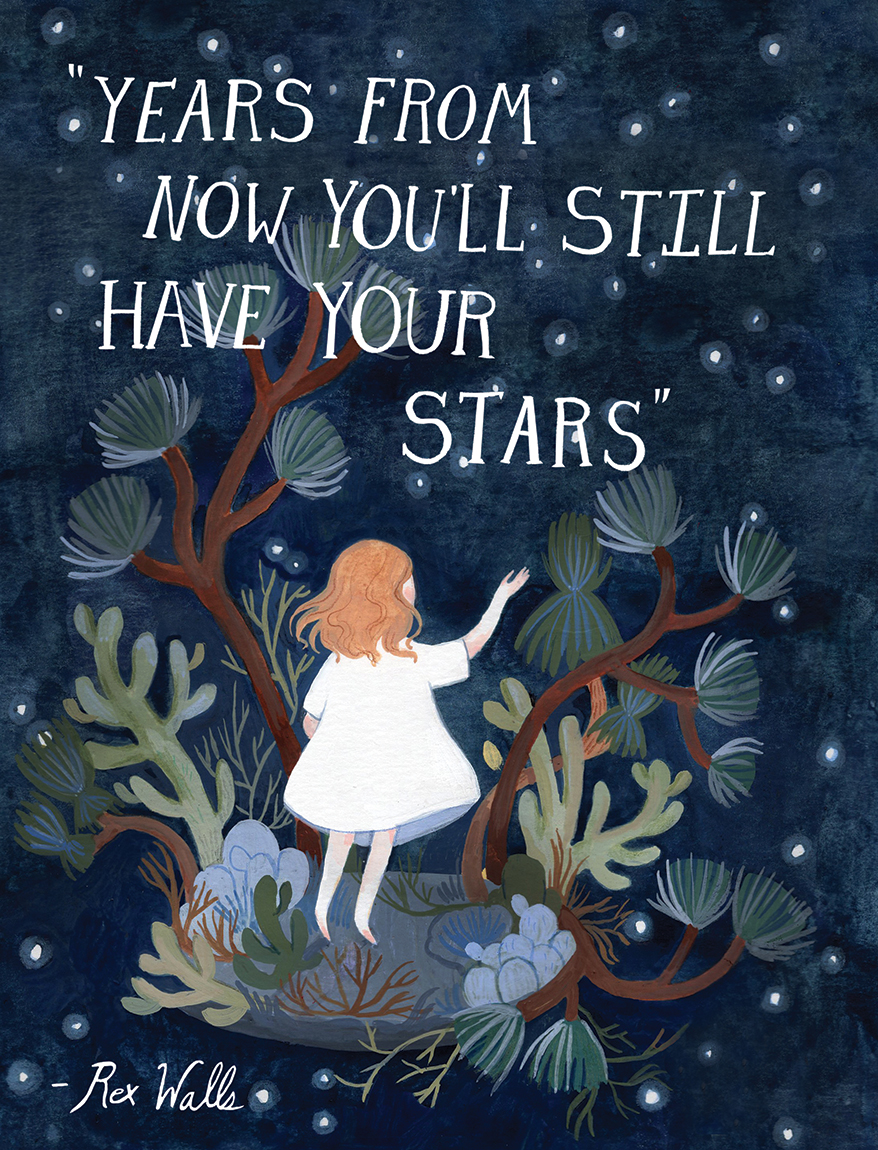



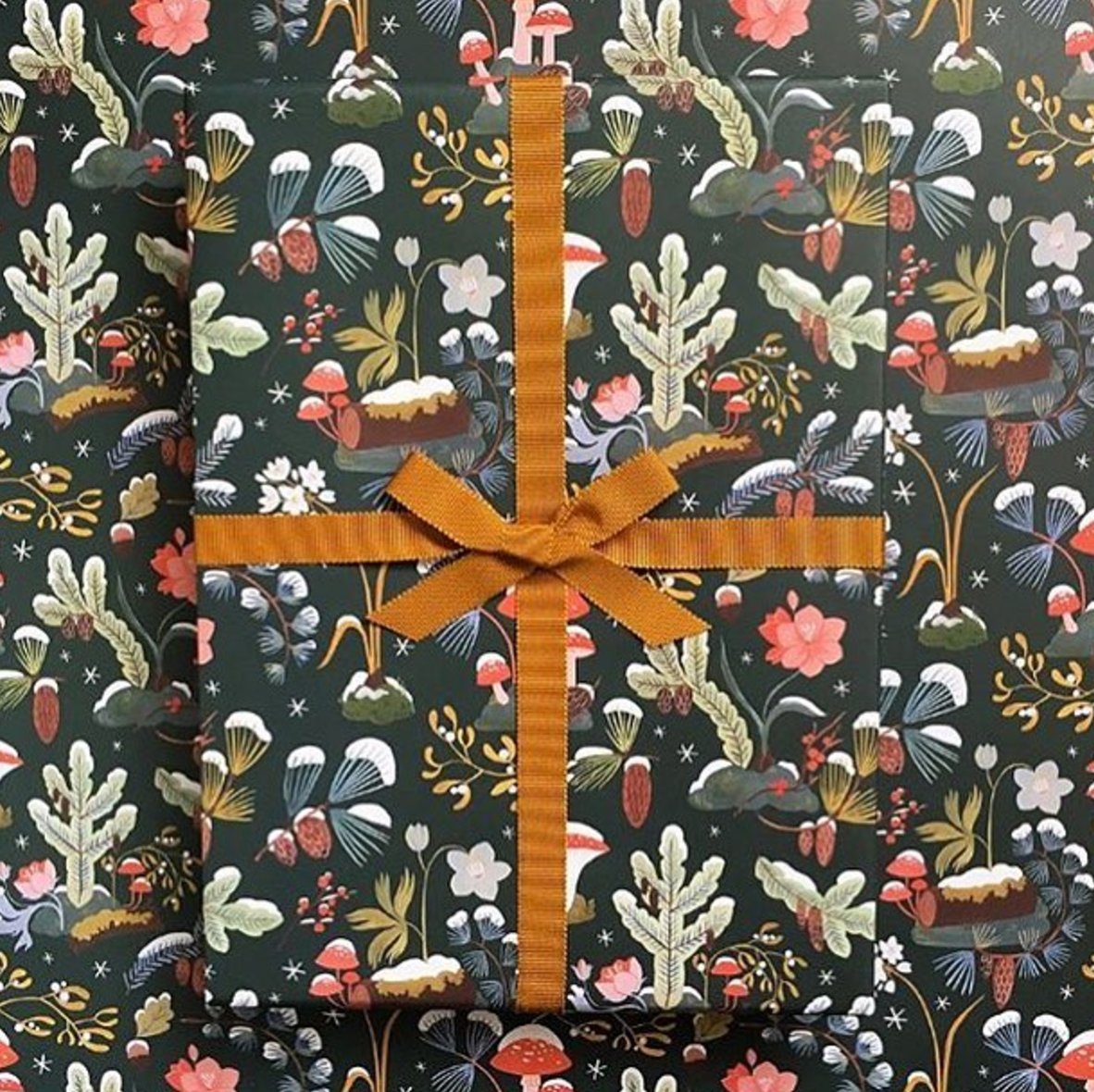 6. If you weren’t an illustrator, say, in an alternate universe, what would be your creative outlet?
6. If you weren’t an illustrator, say, in an alternate universe, what would be your creative outlet?